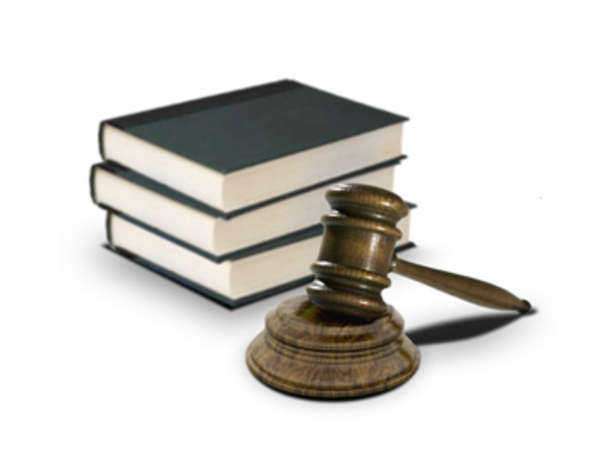
Applying for Chapter 7 bankruptcy or liquidation should not be a person’s first choice when it comes to settling cases of monies owed. Ideally, he or she should be able to work with creditors and financial institutions prior to bankruptcy court.
Overview
In times of economic downturn, some people manage their financial problems better than others, or even manage to thrive under apparently bleak conditions. For those caught behind the 8-ball, so to speak, Chapter 7 bankruptcy, also known as liquidation proceedings, may be the only remaining option.
In Chapter 7 bankruptcy, which is the most common form filed with bankruptcy courts, individuals and businesses sell unprotected assets to help pay at least some of the monies owed to collectors, at risk of dealing a blow to their credit ratings in the process. In applying for Chapter 7 bankruptcy, petitioning parties must assure they are eligible for this option lest they get charged with fraud, work cooperatively with the court-appointed trustee overseeing the claim, and attend meetings whereby liquidated assets will be assigned to interested parties.
Depending on the circumstances of a particular case, any number of parties may submit a formal request for this course of action. Often, it will be the debtor’s creditors themselves that propose a Chapter 7 bankruptcy order, or even the U.S. Secretary of State (also known as compulsory liquidation).
Then again, a move to liquidate assets and put a stay on creditors’ collection actions may come directly from the persons or companies looking to file (also known as voluntary liquidation). In the case of a corporation seeking protection under Chapter 7, even before bankruptcy court proceedings begin, this entity may cease to do business, and at some point in these affairs will dissolve itself in part or in whole.
Purpose and Usage
For individual debtors and business owners, the decision of whether or not to apply for Chapter 7 bankruptcy may be a bittersweet one. In many regards, declaration of bankruptcy and liquidation of assets implies loss. Literally, it could be loss that brings someone to their state of economic desperation. Beyond this, there is the material loss of one’s possessions, or the emotional loss of having to admit defeat of sorts at the hands of one’s debt or even having to dissolve a long-standing corporation. In the end, though, what a person may gain is a fresh start.
Such is the very intent of Chapter 7 liquidation for people: to free one of his or her financial obligations. At least in the interim, filing for bankruptcy in this way will, in most cases, force creditors to stop collections while the case is processed without even having to have an extra hearing to decide such matters. Truly, Chapter 7 filings may spell relief for the debtors who initiate them. Just the same, the purpose of Chapter 7 bankruptcy may be understood in terms of what it is not.
Useful Information
Though the most useful details for an individual or a corporation seeking relief through bankruptcy may arguably be the most relative to their situations, more broadly, some vital information must be sought by all parties. In initiating bankruptcy court proceedings under Chapter 7, a petitioner needs to account for all sources of debt and creditors, as well as income and expenses, contracts and leases, and exempt and non-exempt assets.
Furthermore, he/she/it (in the case of a business) must take the time to prepare copies of these records and double-check to make sure everything contained within is accurate to the best of one’s knowledge. Moreover, members of a married couple should each ready those statements of their particular financial affairs, even if they are filing for Chapter 7 bankruptcy jointly.
In Chapter 7-specific court proceedings, one of the most valuable roles a bankruptcy lawyer may play is of advocate and supporter, particularly if petitioners are found to have made a fraudulent bid for relief. Certainly, with their prowess in bankruptcy law, they will be able to identify protected properties owned by their clients and argue on behalf of them (the debtors) keeping these assets in the event that creditors get aggressive in pursuit of them (what is owed).
Plus, lawyers will be instrumental in appealing decisions made by the bankruptcy courts that find people/businesses committed a form of abuse of the system with their initial request. The innovation of the “means test” has made it that much harder to debtors to seek relief under Chapter 7 for fear of litigation against them.
Including the formal petition itself, a number of important Forms are needed by applicants to declare Chapter 7 bankruptcy. As noted above, printed records of one’s financial affairs are a must, as are details about income and expenses, all assets, debts, and loans. Aside from the Official Bankruptcy Form that serves as the petition, other things must be taken into account. Again, married couples may need more than one set of documentation, and as always is the case, exempt assets that may be retained throughout Chapter 7 proceedings should be enumerated.
Parties seeking Chapter 7 relief from collectors should also expect fees in processing their claim, namely a case filing fee, an administrative fee and a surcharge for the appointed trustee that total some $300 (and of course, hired attorneys will charge their own rates for services rendered). In need-based situations, though, the judge will let applicants pay these costs in installments or completely waive them.
Governing Laws
In light of the legal language used and the obvious variations in policies from state to state and court to court (notably regarding protected assets), Chapter 7 bankruptcy law can be decidedly complex. Just the same, with uniform policies in place, the general structure of bankruptcy court proceedings and the standards that govern them are largely unified. Chapter 7 bankruptcy is a mere subset of the Bankruptcy Code contained in Title 11 of the United States Code, a 50-title compilation of existing, permanent Federal legislation.
Some aspects of bankruptcy law applicable to Chapter 7 are more established while others have come by way of amendment in the past decade or so. As per tradition, repeat applications for Chapter 7 assistance are discouraged, especially right after the last case was settled. The law also requires that the debtor remain active and punctual throughout proceedings relating to his or her claim or he faces dismissal of his case.
The Bankruptcy Abuse Prevention and Consumer Protection Act of 2005 (BAPCPA) served as a major overhaul of Chapter 7 principles, adding the now-standard means test by which bankruptcy abuse is assessed.
How to File
Along with the requisite administrative forms and fees and considerations of particular laws that must be followed in filing for Chapter 7 bankruptcy, a person or company must also follow procedural constraints from beginning to end. Certainly, the forum in which these matters will be heard is of great importance. The clerk of court will usually assign a court and judge based on where the applicant lives or does primary business, and a trustee will be appointed to serve as a bridge between debtor and creditors.
Even before these matters come to pass, though, petitioners should verify that they are eligible for Chapter 7 liquidation of assets at all, checking their income against the median salary of the employed in the United States to see if they make more (often, this will disqualify parties) than the established maximum amount set by the Federal Government.
Though not concerned literally with the actual filing of petitions or documents, readying oneself for the creditors’ meeting is a necessary step in the application process as well. Debtors should be cooperative in all regards and with all parties, especially creditors, and should come with all documents that need to be examined, neatly prepared and organized. On top of this, debtors must be prepared to field questions from both creditors and the trustee, and should be fully aware of potential ramifications of opting for Chapter 7 relief.
Statistics
Despite the policies enacted by the 2005 BAPCPA for consistency from year to year with regard to Chapter 7 liquidation petitions, the differences between corporate and non-corporate filings and regional differences are perennially similar. There is a highly significant disparity between cases for individuals and cases for businesses, with the former accounting for higher than 95% of proceedings in bankruptcy court.
As for which parts of the country yield the biggest numbers per annum under Chapter 7, the Ninth Circuit (i.e. northwest and southwest America, Alaska/Hawaii, and Guam/Northern Mariana Islands) is the leader, responsible for almost 250,000 filings a year, while the First Circuit (i.e. New England and Puerto Rico) is the smallest contributor, responsible for less than a fifth of that annually.




















